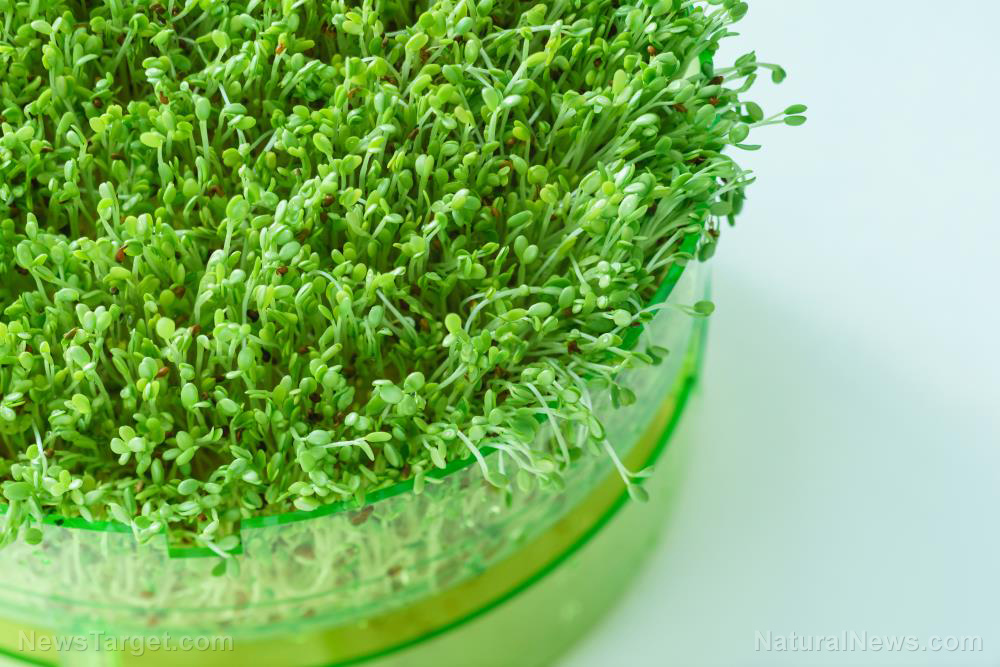Keeping it green: 9 Air-purifying houseplants for your living room
03/05/2021 / By Virgilio Marin

If you like to keep it green, there’s no better way of purifying the air in your living room than through houseplants. Houseplants can improve air quality and make your living space healthier. Research from the National Aeronautics and Space Administration shows that houseplants can absorb volatile organic compounds like formaldehyde and benzene. These chemicals are toxic and may even be carcinogenic in high concentrations.
If you’re looking to get more plants for your living room, these nine houseplants are excellent air purifiers and, at the same time, beautiful, functional decors. (h/t to Health.com)
1. Areca palm (Chrysalidocarpus lutescens)
Areca palms are attractive houseplants that can absorb benzene, carbon monoxide, formaldehyde, trichloroethylene and xylene. Though areca palms are easier to grow indoors, they can thrive indoors too when provided with enough sunshine. Place these houseplants in well-lit corners and water them often during growth.
2. Spider plant (Chlorophytum comosum)
3. Lady palm (Rhapis excelsa)
Lady palms are small, long-lasting fan palms that feature multiple bamboo-like trunks. These houseplants are quite easy to grow and can absorb air pollutants like ammonia, formaldehyde, xylene and carbon dioxide. Lady palms thrive in indirect sunlight and moist soil.
4. Rubber plant (Ficus elastica)
Rubber plants are evergreen trees that can remove carbon monoxide, formaldehyde and trichloroethylene from the air. These plants thrive in filtered light and moist soil, so they need only moderate amounts of water. Prune the leaves to keep them looking pretty.
5. Janet Craig Dracaena (Dracaena deremensis)
Janet Craig dracaenas are flowering plants that are excellent at absorbing formaldehyde, xylene, toluene, benzene and trichloroethylene. They can stay alive even in low indoor lighting and require only moderate amounts of water.
6. English ivy (Hedera helix)
English ivies are evergreen climbing plants that can absorb air toxins like benzene, carbon monoxide and formaldehyde, and even harmful allergens like mold and fungus. These plants can thrive anywhere, though different varieties prefer different light conditions, ranging from bright, indirect light to low-light spaces. Water generously during growth but avoid overwatering during the winter.
7. Peace lily (Spathiphyllum wallisii)
Peace lilies are popular flowering houseplants that can absorb ammonia, formaldehyde, benzene, trichloroethylene and xylene. They thrive in most lighting conditions, though too little light can prevent flowers from blooming. Keep the soil slightly moist and place them in a well-lit spot.
8. Boston Fern (Nephrolepis exaltata)
Boston ferns are known for their thick leaves that look lovely in a hanging planter. These houseplants can absorb air pollutants like formaldehyde, xylene, toluene and benzene, and are quite easy to care for. They require only regular watering and an adequate amount of light.
9. Weeping fig (Ficus benjamina)
Weeping figs are tree-like plants that can eliminate formaldehyde, xylene and toluene from the air. While they’re excellent houseplants, they’re typically grown outdoors, so be sure to give them ample sunlight and water.
If you’re having a hard time choosing among these nine houseplants, you can mix up the plants in your living room. This way, you can eliminate more types of indoor air pollutants than just sticking to one species of plant.
Learn how to care for houseplants at GreenLivingNews.com.
Sources include:
Tagged Under: air quality, air-purifying plants, environment, green living, home and life, home gardening, houseplants, indoor gardening, volatile organic compounds
RECENT NEWS & ARTICLES
COPYRIGHT © 2017 HOME GARDENING NEWS com




















